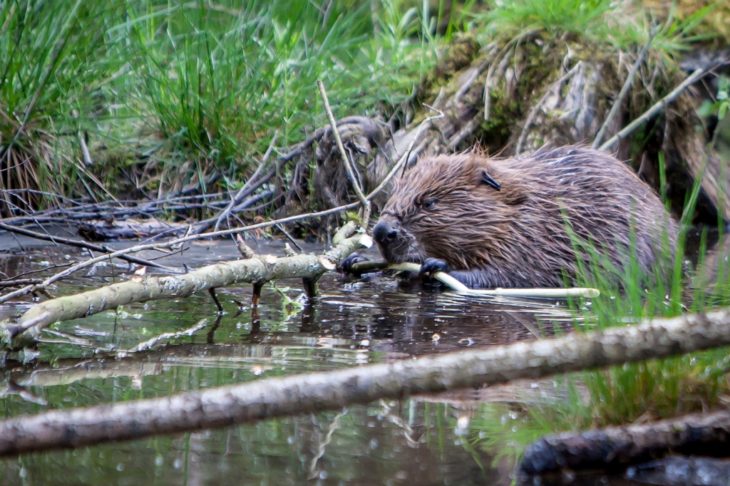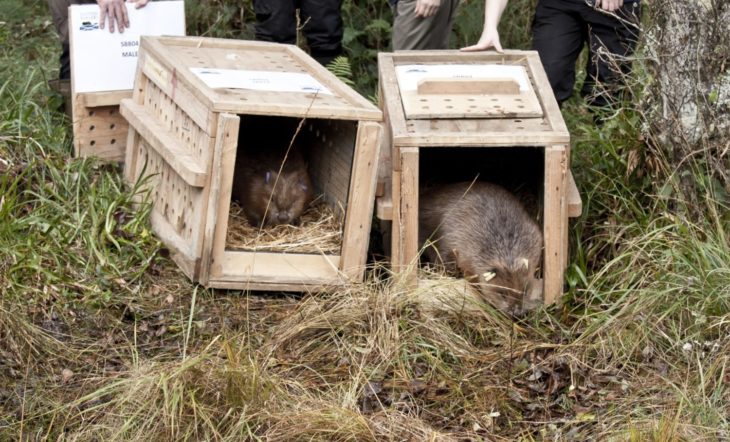What’s next for Scotland’s beavers?
The introduction of European Protected Species status for beavers in May was a historic moment. It followed decades of work by many people within a wide variety of conservation organisations.
Despite reaching this milestone, we aren’t complacent. Even though beavers now have protected status, there is still a lot to do to secure a thriving population in Scotland.
Much of this work takes place behind the scenes. Over the past two years, we have been working through the Scottish Beaver Forum, chaired by Scottish Natural Heritage, to ensure a positive future for beavers. This group brings together a broad range of interests including conservation, farming, fisheries and forestry to achieve consensus between different groups regarding beaver management.
By working with the Forum and Scottish Natural Heritage, we have secured better guidance for managing beavers in several key areas.
Welcome measures to protect beavers
The positive changes that beavers can bring to the landscape are widely known. They create new wetlands and mosaic habitats, which in turn provide new niches for invertebrates, amphibians, mammals and birds. Beavers also provide important ecosystem services. They filter water and slow down its flow through river catchments.
Clearly, the actions of beavers are not always welcome. Dams in the wrong places can cause localised but significant damage to both farmland and infrastructure. We accept that where these conflicts occur beavers and their impacts need to be managed.

We have pressed for and welcome a number of recent improvements to the beaver management framework that should help ensure that the conservation status of the species is not harmed as a result of this management.
First of all, there is a strong emphasis that lethal control should always be a last resort. There are also more alternative methods that should be undertaken to manage impacts, unless specific circumstances mean they would not be effective.
Finally, there is a stronger focus on avoiding lethal control from April until August, the period when kits (young beavers) are dependent on their mothers. We welcome the news that no lethal control was carried out under licence during this period in 2019.
All landowners in Scotland with lethal control licences have been offered trapping and removal of animals as an alternative to lethal control, and we’re pleased that many licence holders have taken this up.
Allowing beavers to be moved from Tayside to more areas of Scotland would help this mitigation work, and ultimately have a positive impact on the natural expansion of beavers throughout the country.
A national plan for beavers
To ensure that we can all enjoy the benefits that beavers can offer, it is important to have a bold national strategy. This should highlight the role that beavers can have in tackling both the climate emergency and the biodiversity crisis, particularly through flood prevention, water filtration and habitat creation.
“To ensure that we can all enjoy the benefits that beavers can offer, it is important to have a bold national strategy.”
The process of writing a national strategy for beavers has begun and we are pleased that we will be consulted, through the Scottish Beaver Forum, as this progresses.
The measure of the strategy’s success will be whether it allows beavers to use all of the suitable habitat in Scotland, while also allowing for and supporting the mitigation measures needed to help us to co-exist with the species.
Regular monitoring – including genetic testing to check that the Scottish population is healthy and robust – that allows us to assess the conservation status of beavers, and adjust the strategy accordingly, will also be vital.

We would also like to see the Scottish Government consider releasing beavers into new areas. This will not only have a positive impact on the natural expansion of beavers throughout the country, but also help reduce conflicts in problem areas.
Currently, Knapdale Forest in mid-Argyll is the only site in Scotland where beavers can be released. As a result, some animals are being moved to other parts of the UK to help with reintroduction projects, and Scotland is losing some of its already small population of beavers.
We will continue to support the return of beavers and work to ensure that Scotland’s people and wildlife benefit from the reintroduction of this amazing ecosystem engineer.
Gill Dowse, Knowledge and Evidence Manager, Scottish Wildlife Trust
Help protect Scotland’s wildlife
Our work to save Scotland’s wildlife is made possible thanks to the generosity of our members and supporters.
Join today from just £3 a month to help protect the species you love.
Preface
The introduction of European Protected Species status for beavers in May was a historic moment. It followed decades of work by many people within a wide variety of conservation organisations. …
